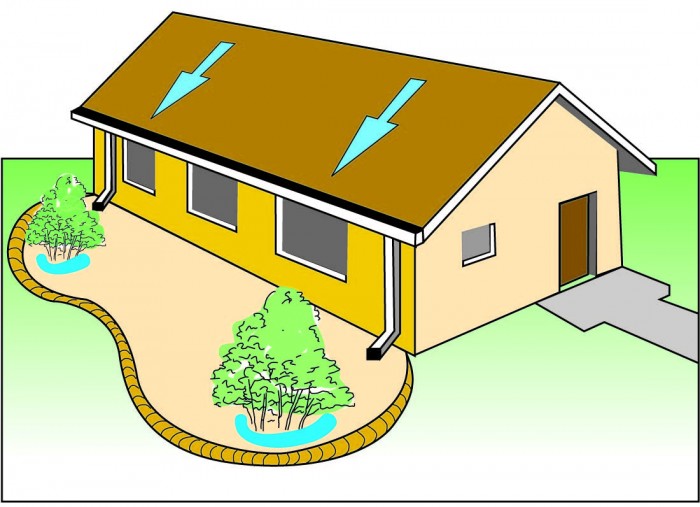The PermaDesign Weblog, with Nate Downey and Melissa McDonald!
Roof-Reliant Landscaping™ Step 7: Know the Basics
Every roof-reliant landscaper needs to have an understanding of how to collect water from a roof and how to divert this water to landscape plants or to a cistern for storage. This post provides an introduction to rooftop rainwater harvesting and gives an overview of both types of cistern systems—aboveground (the water tank sits at ground level) and below-ground (the water tank is buried underground). The terms and cistern system components introduced in this post will further described in detail in the future.

Rainwater harvesting systems are usually divided into two main types: simple (also commonly known as “passive”) and complex (also known as “active”). In a simple rooftop rainwater harvesting system, precipitation is captured from a roof and diverted directly to plants in the landscape. (The figure above shows an example of this simple approach.) Note that in this simple system, rainwater hits the surface of a roof and is gravity-fed downward. The water collected off the roof is diverted by gutters and downspouts, which then deliver the water to the area of landscape plants. Except for some land contouring to direct the flow of water on the ground and encourage the water to settle near the planted vegetation, no attempt is made to store the rainwater for future use.
A complex rainwater harvesting system includes a storage tank for some or all of the water collected. (The figure below shows an example of this simple approach.) Therefore, a true roof-reliant system as defined in this blog series is a complex rainwater harvesting system because it requires a storage tank so that the water can be used at a later time. The ability to store water greatly increases the number and variety of plants that can be grown in a roof-reliant landscape because it provides a water source between natural rainfall events. When widely installed and used throughout New Mexico, rooftop water harvesting systems that include cisterns have the potential to significantly reduce the use of potable water for landscape irrigation.

09/17/2015 | (1) Comments










Comments
I’ve been interested in this concept for years but I’m in Texas so don’t hear much about it.